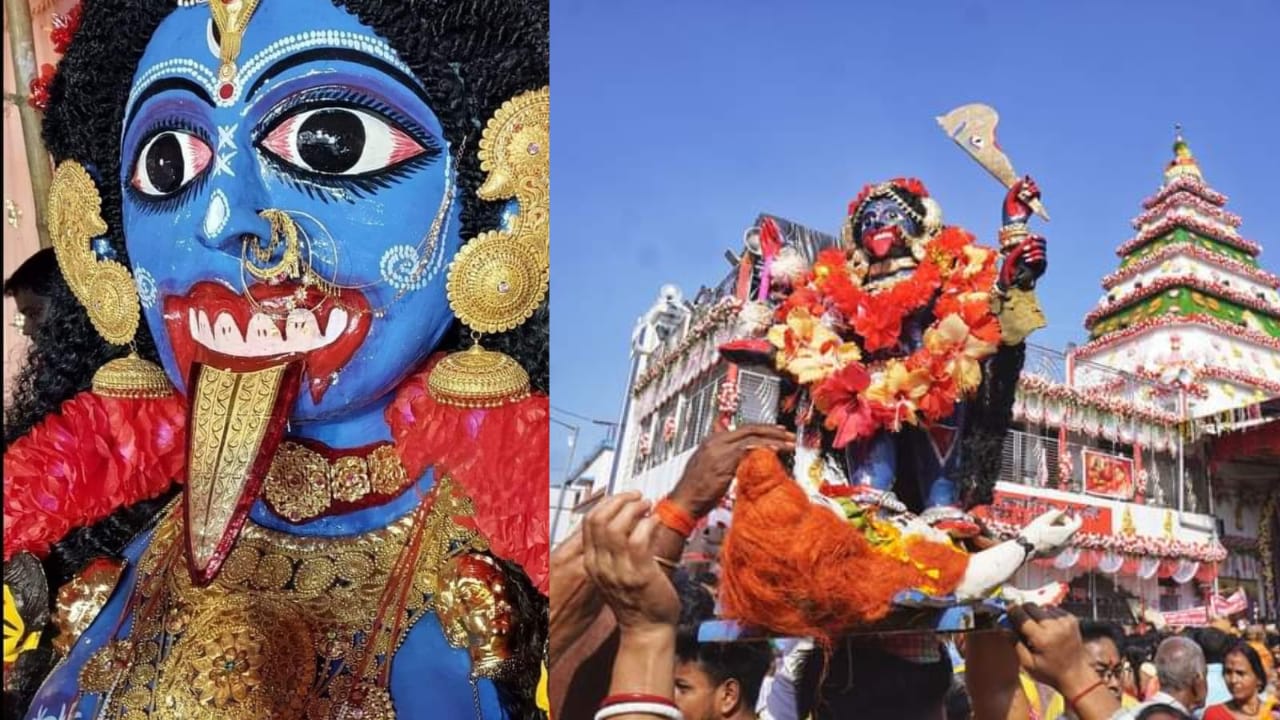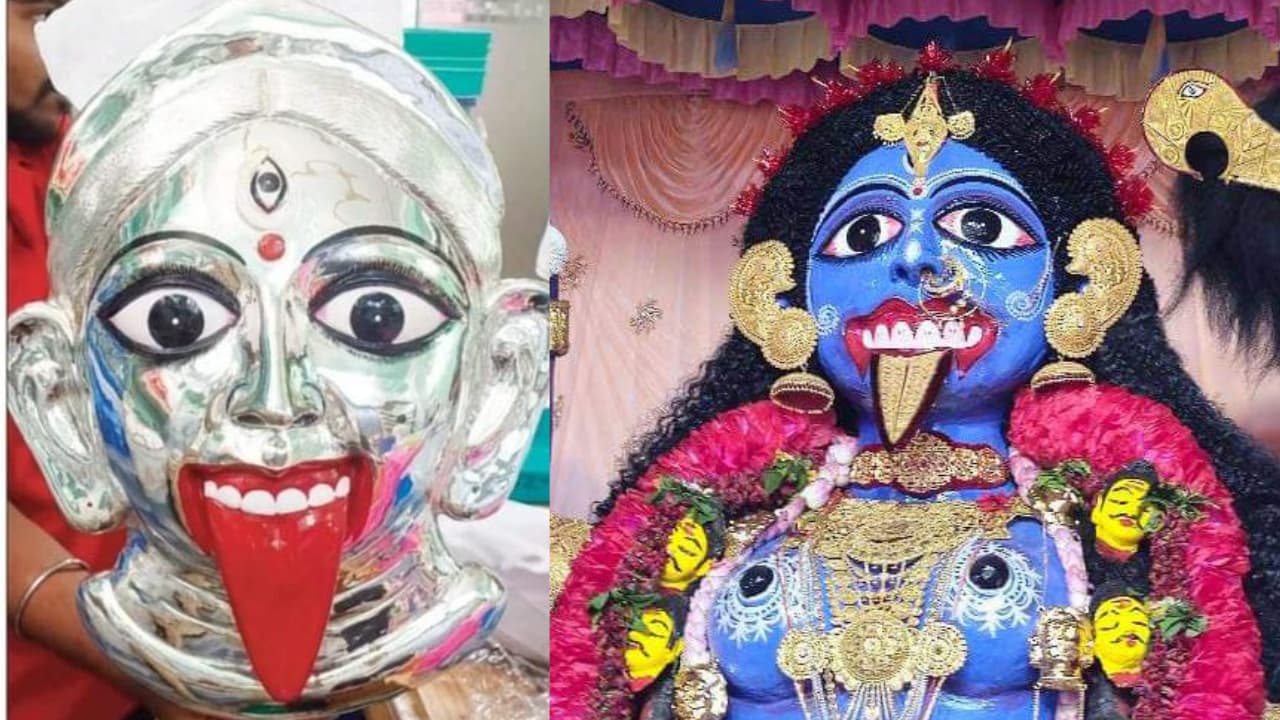Nestled in South Dinajpur, West Bengal, the ancient and revered Matripeeth of Bolla Raksha Kali draws devotees from far and wide, particularly on the Friday following Ras Purnima. This annual worship, deeply rooted in history and tradition, is more than a religious occasion; it is a celebration of faith, culture, and community harmony.
Origins and Historical Significance
The origins of the deity’s name, Bolla Kali, are a subject of intriguing debate. Some trace it to Ballava Kali, the cherished mother of a local zamindar, Ballab Roy. Others believe it derives from Ballal Kali, commemorating a Matripeeth founded by the Sena ruler, Ballal Sen. Adding to the mystique is a legend of divine intervention: a villager dreamt of the goddess, discovered her stone form in a pond, and began her worship. Initially called Marka Kali, her special rituals were performed on the Amavasya (new moon) of Jaishtha.

The deity gained prominence during the colonial period when zamindar Murarimohan Chowdhury, imprisoned by the British for leading a rebellion, sought her blessings. Following his miraculous acquittal, Chowdhury vowed to hold a grand annual puja on the Friday after Ras Purnima. The tradition began in 1920, and the goddess earned the name Raksha Kali, symbolizing her protective nature.
The Transformation of the Worship
Over the decades, the modest celebrations of Bolla Raksha Kali have evolved into a grand festival, featuring a seven-and-a-half-foot idol adorned with resplendent gold and silver ornaments. The annual puja now attracts thousands of devotees, who partake in its rituals and festivities. One of the most unique customs here is the Manat Puja, where smaller Kali idols are placed before the main deity as offerings of gratitude or prayers.
The highlight of the festival is the striking decoration of the idol. Adorned with ornaments weighing over 30 kilograms, the goddess captivates devotees with her majestic appearance. This year, her adornments include a gold tongue weighing 100 grams and an eight-foot-long silver Narmundmala (garland of skulls), reflecting both the tradition’s opulence and the devotion of her followers.

Communal Harmony and Festive Fervor
The Bolla Raksha Kali festival is not just a religious event but also a beacon of communal harmony. Muslims from nearby villages actively participate in the celebrations, offering Sinni (a type of food offering) at the local Eidgah, symbolizing unity amidst diversity. The festival also hosts one of North Bengal’s largest fairs, drawing visitors from various communities and regions.
The three-day celebrations culminate with the immersion of the idol in the temple’s adjoining pond. This tradition, while spiritually significant, leaves devotees unable to see the goddess’s face for the rest of the year. To address this, the temple committee has introduced a silver replica of the deity’s face, crafted at an expense of ₹4 lakhs, ensuring that devotees can connect with the goddess throughout the year.

A Hub of Devotee Hospitality
During the festival, the temple precincts transform into a hub of activity, with special arrangements made for the influx of visitors. The Nat Mandir adjacent to the temple serves as accommodation, while government and private transport services operate round-the-clock. The vibrant fair adds to the festive mood, offering a variety of cultural performances, traditional crafts, and local delicacies.
A Legacy of Devotion
The introduction of the silver face and the new ornaments this year highlights the evolving nature of devotion at the Bolla Raksha Kali temple. These additions, while enhancing the deity’s magnificence, also underscore the temple committee’s commitment to preserving and enriching this heritage site. The devotees’ unwavering faith and contributions ensure that this sacred tradition continues to thrive.

Conclusion
The Bolla Raksha Kali festival is more than a spiritual gathering; it is a living testament to Bengal’s rich cultural tapestry and its ability to integrate faith, history, and community. As devotees flock to South Dinajpur to seek the blessings of the protective mother, they carry forward a legacy that transcends generations. This sacred site, steeped in history and adorned in devotion, remains a symbol of hope and unity for all who visit.
Information & Images are Collected from Mr. Arunabha Dutta.





